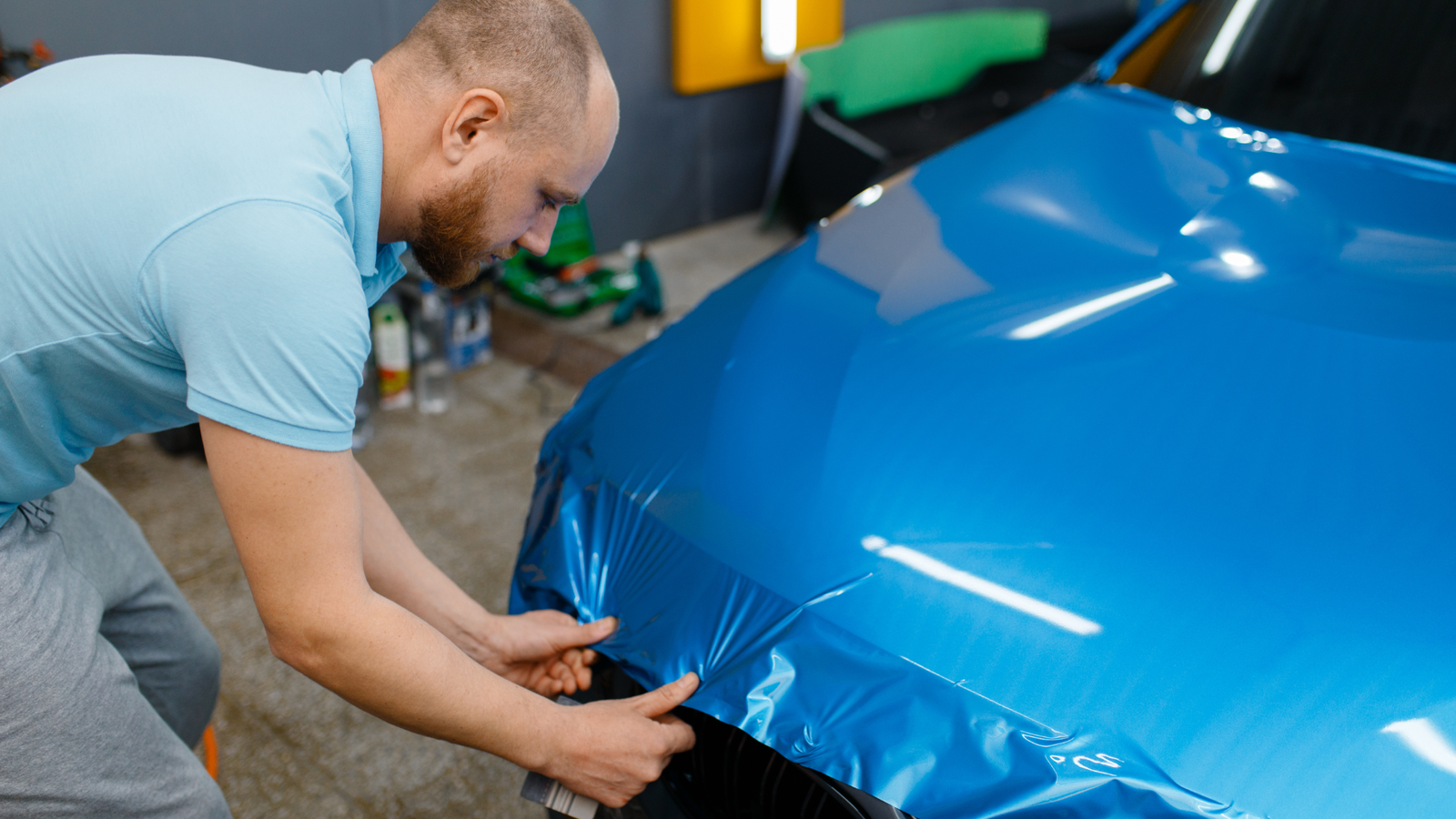The Evolution of Car Wraps | From Military Camouflage to Mainstream Marketing

In the realm of vehicle modification and advertising, automobile wraps have become an effective tool for both people and companies. Cars can now function as eye-catching, moving billboards thanks to a marketing tactic that started as a useful application for the military. Let’s see the amazing journey of car wraps from their modest beginnings to their current position as a common sight on roadways all around the world.
The Evolution Of Car Wraps
The Evolution of Veccut Car Wraps refers to the historical growth and development of techniques, materials, and applications used to wrap and customize vehicles with adhesive vinyl films. This history includes technological advancements, changes in customer preferences, and adjustments in the use of automobile wraps, which began as military camouflage and have now been widely adopted in mainstream marketing, advertising, and personalizing. It entails improving materials, printing techniques, and design capabilities, as well as broadening the market for car wraps beyond military and commercial applications to include private vehicle owners wanting customization and branding options.
Military Camouflage to Mainstream Marketing
The term “Military Camouflage to Mainstream Marketing” refers to the transfer and adaption of an idea or technique from its original military application to general commercial or civilian use, particularly in marketing and advertising. In the case of automobile wraps, this evolution involves the move from the method of applying camouflage patterns for military purposes to the use of vehicle wraps as a medium for advertising, branding, and personalization in mainstream consumer culture. This shift entails reusing the utility and aesthetics of military camouflage for commercial and creative purposes, emphasizing the concept’s versatility and applicability across industries and applications.
Car Wraps Origins in the Military: Camouflage and Beyond

Car coverings originated in the military, which is where they originated. Military vehicles were frequently disguised in the early 20th century to blend in and avoid notice. This procedure had tactical benefits in the battlefield in addition to protecting the vehicles. The use of vinyl wrappings offered
Technological Progress In Car Wraps: The Revolution of Vinyl
The use of car wraps was transformed when vinyl technology emerged in the middle of the 20th century. Vinyl provided an adhesive, flexible, long-lasting substance that could follow the natural curves and shapes of any car. This innovation opened the door for automobile wraps to become widely used in a variety of sectors, such as motorsports, advertising, and private vehicle modification with the use of veccut vehicle wrap templates.
The Ascent of Advertising: Wheeled Mobile Billboards

Car wraps started to transition from their military and utilitarian roots into the world of advertising in the late 20th century. Companies realized they could reach a wider audience while on the go by turning their cars into mobile billboards. Car wraps provide more visibility at a lower cost than conventional advertising forms, including print, television, and billboards.
Acceptance in the Mainstream: Personalization and Customization
Car wraps gained popularity as the 20th century progressed among people looking to customize their cars. With countless personalization options ranging from vivid designs to smooth matte finishes, wraps allowed people to show their individuality and preferences. Furthermore, owners could alter the appearance of their cars as much as they liked without having to commit to a long-term paint job because wraps are only temporary.
Technological Innovation: Precision and Digital Printing

The rise of automobile wraps was further fueled by technological advancements in digital printing, which made it possible to recreate elaborate patterns and extremely detailed designs with accuracy. This breakthrough pushed the limits of what could be accomplished with vehicle wraps, giving designers, advertisers, and enthusiasts alike more creative options.
Sustainable Solutions about the Environment
Concerns about the environment have led to a change in the automotive industry’s procedures and materials in recent years, including car coverings. In response, producers have created recyclable materials and environmentally friendly vinyl formulas, which have lessened the environmental impact of vehicle wraps. Furthermore, compared to conventional painting techniques, wraps are a more environmentally responsible choice because they can be removed without affecting the underlying paint
Prospects for the Future: Smart Technology Integration

Car wraps are expected to undergo more innovation and be integrated with smart technologies in the future. With the popularity of electric and driverless cars, wraps may become more than just platforms for branding and advertising; they may also become interactive screens that can show passengers and pedestrians alike dynamic material. Consider
To sum up, the transformation of vehicle wraps from military concealment to commercial advertising has been amazing. What began as a useful way to hide military vehicles has grown into a thriving sector that includes customization, advertising, and technological advancement. The potential uses for vehicle wraps are only constrained by our creativity, which bodes well for innovative advancements in the years to come.
In the fast-paced world of modern advertising and vehicle customization, one trend stands out as both useful and physically appealing: car wraps. These adaptable coverings have a long history, dating back to military uses where camouflage was used strategically on the battlefield. However, the growth of car wraps did not end there; it grew into a popular marketing approach, transforming regular automobiles into eye-catching, mobile billboards. This essay delves into the intriguing history of automobile wraps, from their roots as military camouflage to their current role as a ubiquitous presence on roadways around the world, engaging both businesses and individuals.
Conclusion:
To summarize, the journey of car wraps from military camouflage to mainstream marketing demonstrates the transformative power of creativity, technology, and innovation. What started out as a functional answer for military concealment has grown into a dynamic form of advertising, branding, and personal expression. As technology advances and consumer preferences shift, the evolution of automobile wraps is far from over. Whether it’s pushing creative boundaries, embracing sustainability, or integrating with emerging technology, the growth of car wraps will undoubtedly continue to shape the landscape of automotive customization and marketing in the years ahead.




